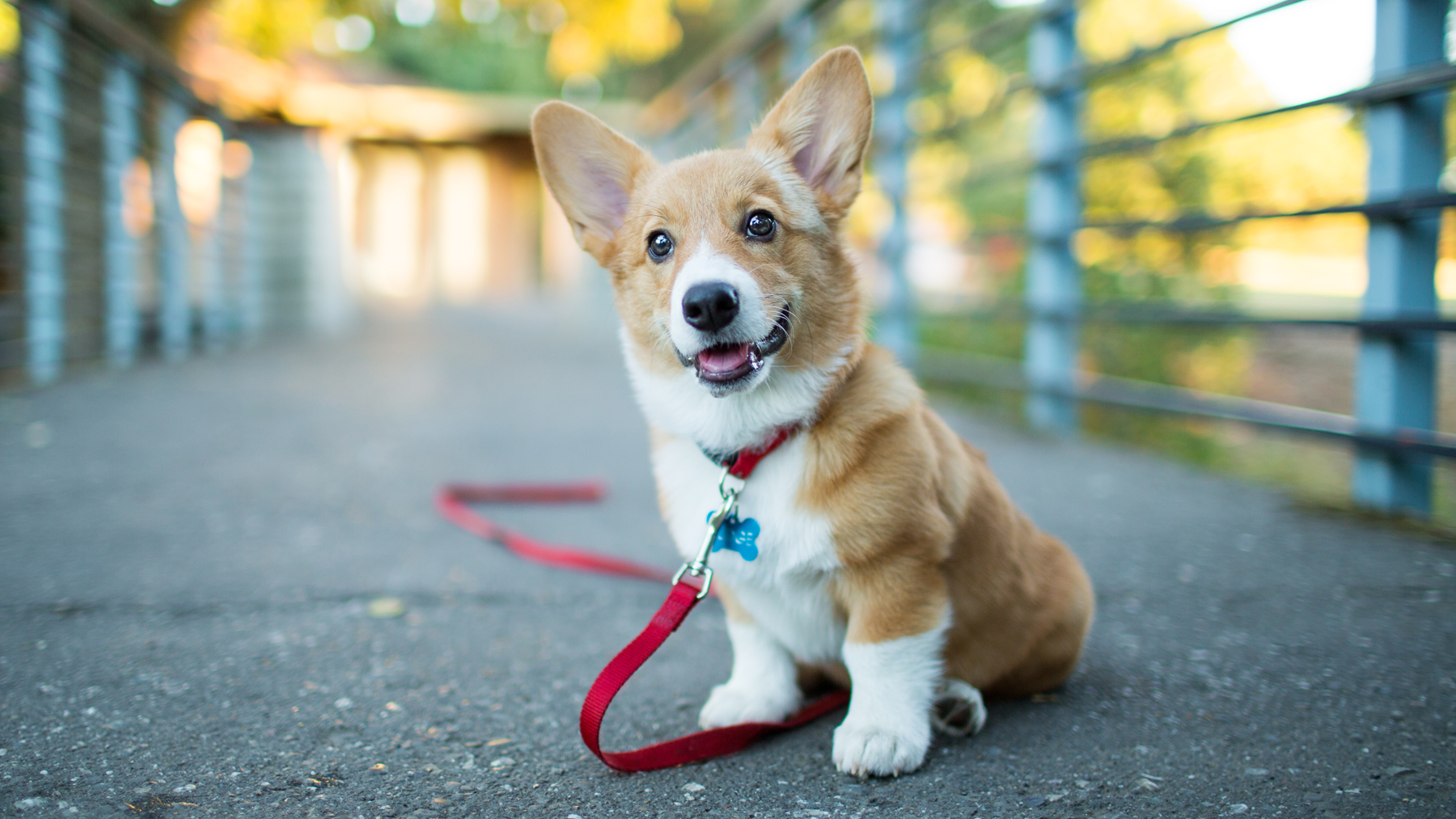How to teach a puppy to sit
Once you know how to teach a puppy to sit you’ll be a dab hand at training your canine new skills and habits

What dog owner wouldn’t want to learn how to teach a puppy to sit? After all, it’s an excellent command to be able to use in everyday life, plus, teaching a new skill to your dog is a great way to bond with them.
When your new four-legged friend isn’t distracted by some of the best puppy toys, they can cause havoc around the house and you’ll soon learn the value of teaching them to sit when you need them to. Thankfully, it’s one of the easier commands to teach. Canine behaviorist and nutrition consultant for Pooch & Mutt, Dr Emma Scales-Theobald recommends that you, “Keep training sessions short and sweet with lots of encouragement, praise and treats. The more fun and enjoyable the training is, the quicker your puppy will learn.”
Being a dog parent is a bit like being a parent to a child, not all styles of parenting and teaching will work for every canine but there are some tips and tricks to make disciplining them a little bit more fluid. Theobald ran us through the basics of teaching a puppy how to sit, when is best to start teaching this command, and why it’s worthwhile doing. We also spoke to Ryan Neile, who is the head of behavior at the UK national pet charity Blue Cross. Read on to find out what the experts had to say…

Dr Emma Scales-Theobald is a canine behavior and nutrition consultant and is Pooch Mutt’s canine behavior expert. Dr Emma has a PhD in Veterinary Medicine and Science from the University of Surrey, specializing in canine behavior, health and welfare. Additionally, she has an MSc in Animal Behaviour from University of Exeter and a BSc (Hons) Psychology with Human Biology, from University of Plymouth. She also works as a Research Fellow with vHive at University of Surrey’s School of Veterinary Medicine, researching Quality of Life in canine and feline osteoarthritis and other canine research.

Ryan Neile runs a team of behaviourists across the country helping pet owners needing support, or assisting the animals in Blue Cross care. Ryan began volunteering for Blue Cross at 13 years old, finding a passion for helping pets and worked his way up through the charity for 29 years. Ryan shares his life with Blue Cross rescue dog Kit, a Dutch Herder.
How do you teach a puppy to sit?
1) Find what motivates your puppy most
First off, you need to establish what motivates your puppy. Dr Scales-Theobald says, “The majority of puppies will enjoy treats, but some may be more motivated by a toy or game or just praise.”
Some training accessories might make your dog hyper such as their favorite toy so, in this case, you might want to focus on just using a food reward, like one of the best puppy treats.
“[Try] something to help them focus and enable training sessions to last longer, whilst still being high value to keep them motivated,” notes Dr Scales-Theobald. If using food, she says it’s best to use small treats or break up bigger ones so that you don’t fill up your puppy too quickly and you avoid overfeeding them. If you’re worried, here’s what to do if your dog is overweight.
Get the best advice, tips and top tech for your beloved Pets
2) Praise the behavior when it naturally occurs
Naturally, your puppy will want to sit frequently throughout the day. When you notice them do this at a suitable time, make an effort to praise them for the action. “Then,” Dr Scales-Theobald says, “You can start to pair this with the command 'sit’ and a hand signal.”
Now you’re ready to tackle the third and final step which is the teaching part.
3) Guide them into a ‘sit’
- Bring the treat or toy to them, right in front of their nose.
- Raise the treat or toy up in a small arc to be above their head, keeping the treat or toy close to their nose. This should make them want to sit down.
- If your puppy keeps stepping backward with this method rather than sitting, you can try guiding their bottom to the ground or try raising the treat or toy higher up out of their reach.
- As soon as their bottom touches the ground, you can give them the treat or toy and praise them.
- After a few repetitions, you can start to pair this with the ‘sit’ command and a hand signal. For example, as soon as their bottom touches the ground, say ‘sit’ and then give them the treat or toy with praise.
- You can then phase out the need to guide them into this position and bring the verbal command and hand signal earlier in this sequence.
Once you’ve mastered this a few times Neile recommends you practice the sit command in different scenarios where your puppy can be faced with other distractions. “Practice ‘sit’ when greeting people, ask your dog to sit rather than jumping up, or when sitting at curbs before you cross a road.” And of course, always remember to reward them.
When should you start training a puppy to sit?
Most people bring a new puppy home at around eight-12 weeks old and according to Neile, you can start right away. This is a good time to teach them basic cues like sit, come, and stay.
Dr Scales-Theobald seconds this and said, “It is a very manageable beginner's trick to teach young puppies. It is a great one to start training your puppy with and is often the first command they will learn.”
As she mentioned earlier, the more enjoyable the learning process is, the more successful it will be. “You could incorporate the training into a game or on a walk,” mentions Dr Scales-Theobald, “To make it more fun than a dedicated training session.”
What are the benefits of teaching a puppy to sit?
“A well-trained dog is a happy dog who will be able to be easily involved in your day-to-day life,” says Neile and this really does encapsulate why you should bother teaching your dog basic cues like sit. If your dog is able to sit and remain in one spot when the doorbell goes, when guests enter your house, at a curb while you are waiting on traffic to pass on a busy road, then it will make your home feel a little calmer, keep your pup out of trouble or danger and bring you peace of mind.
Dr Scales-Theobald says that teaching this trick can also really help to build a stronger bond between the two of you. She explains, “This is because practicing this trick helps to develop your relationship and help your puppy to develop trust in you.” Plus, it encourages your puppy to enjoy training and see how fun and rewarding it can be. It will help form a foundation for other tricks and training like ‘lie down’ and teaching them not to jump up.
If this is your first experience with a new puppy then it’s normal to have lots of questions. Fortunately, we have consulted the experts on many more common questions like how to stop your puppy crying at night and how to train a puppy to walk on a leash.

Jessica holds a journalism degree from Cardiff University and has authored articles for renowned publications, including PetsRadar, Fit&Well, LiveScience, Runner's World, The Evening Express, and Tom's Guide. Throughout her career in journalism she has forged connections with experts in the field, like behaviorists, trainers, and vets. Through her writing, Jessica aims to empower pet owners with accurate information to enhance their furry companions' lives.
